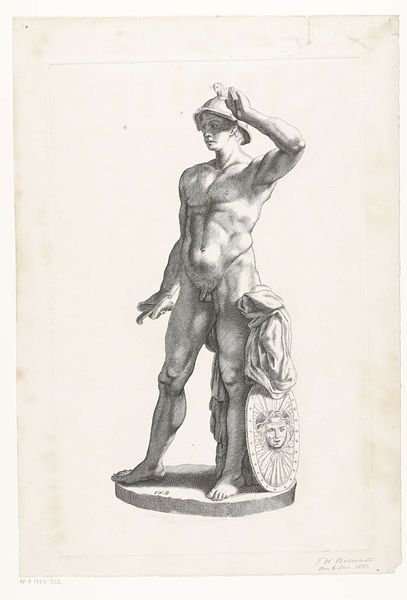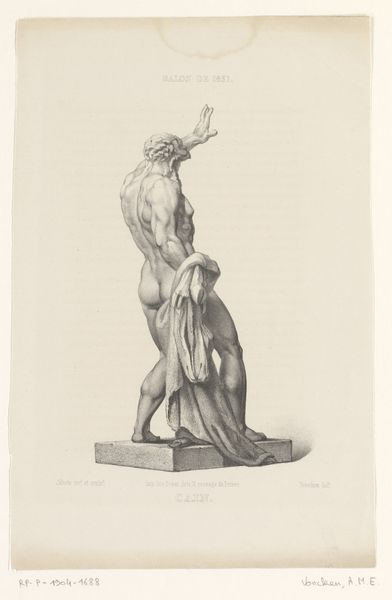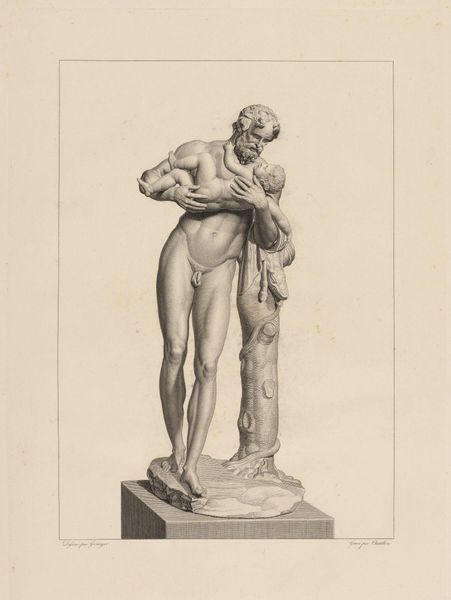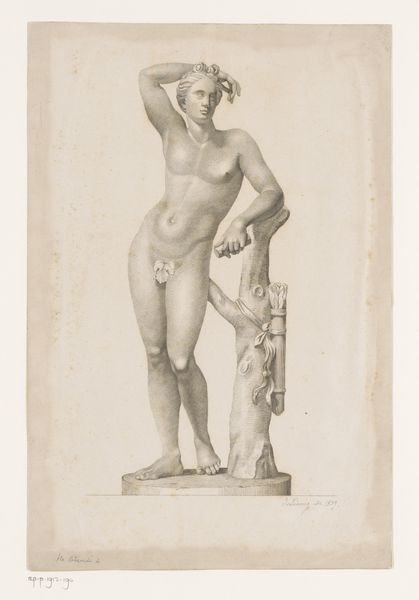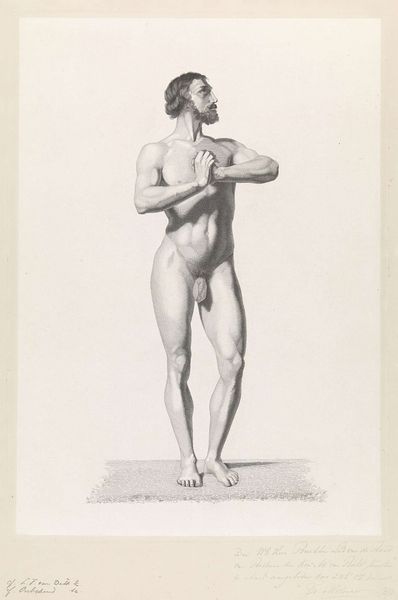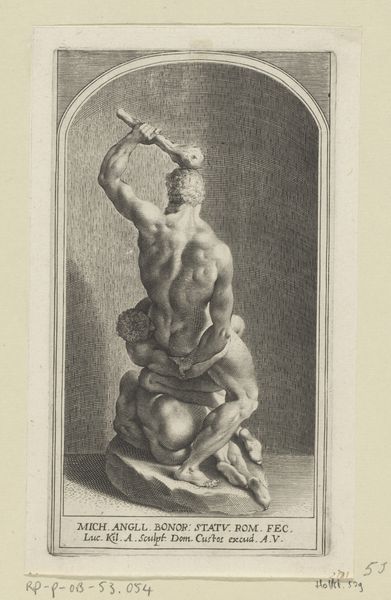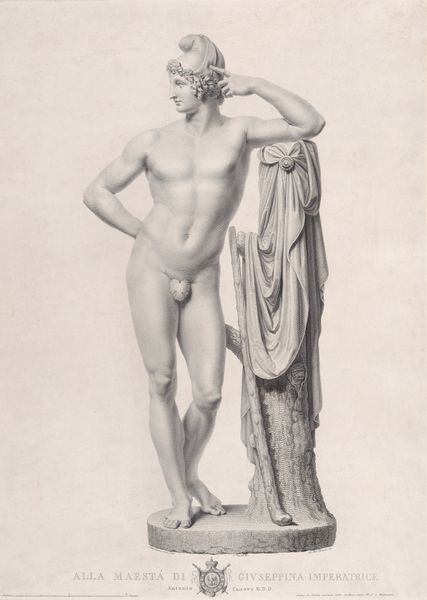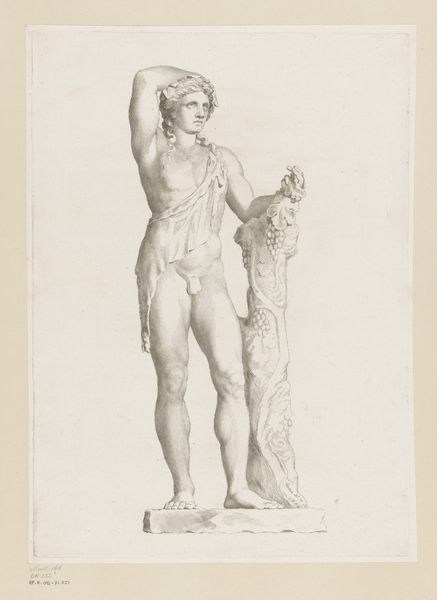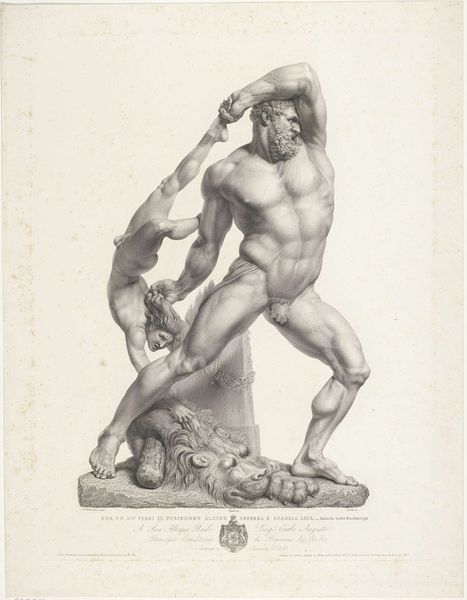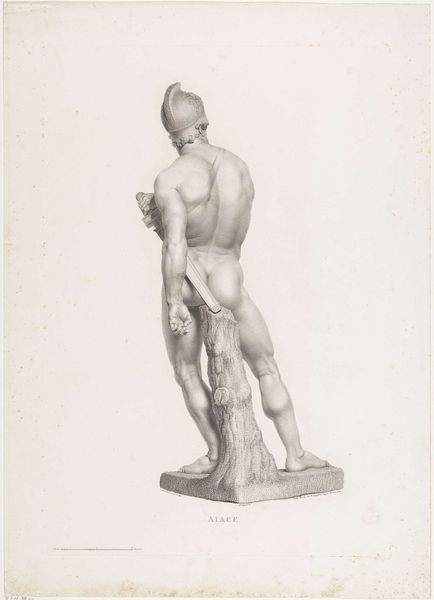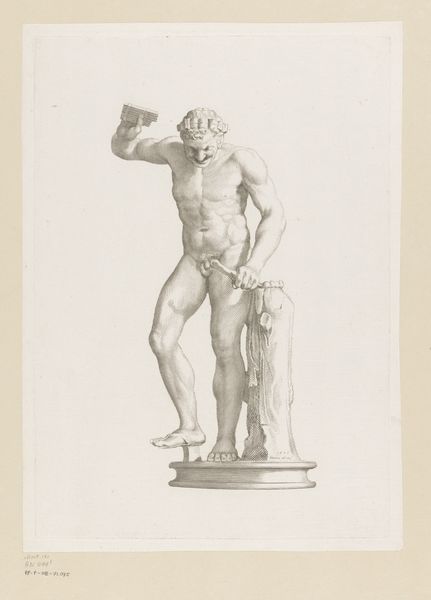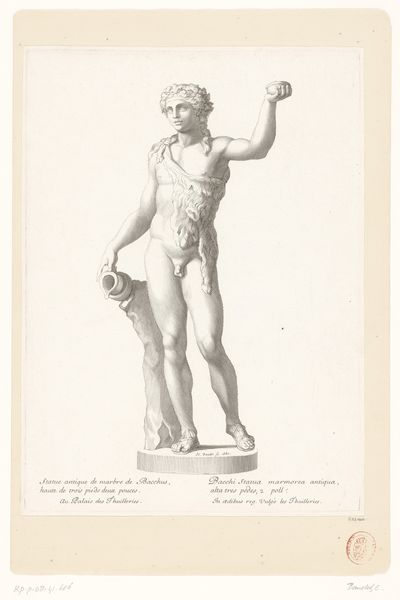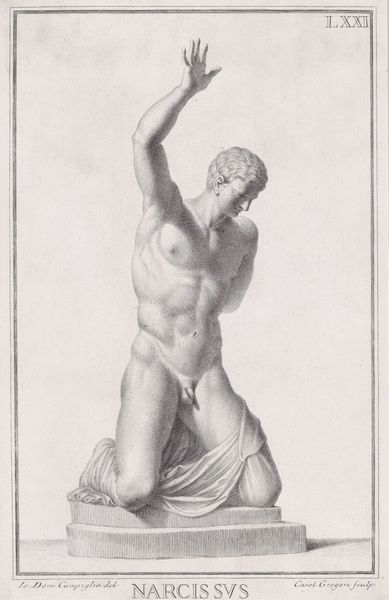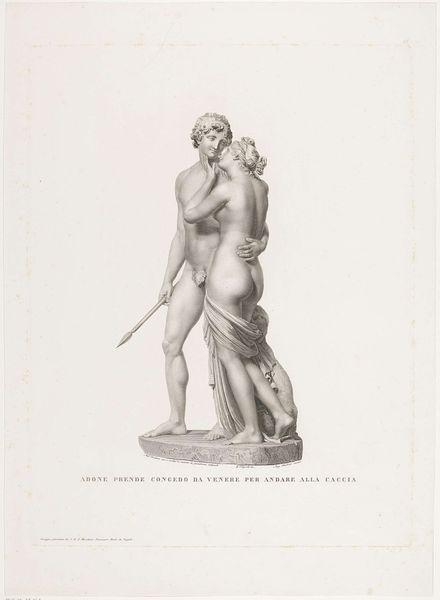
drawing, graphite
#
portrait
#
pencil drawn
#
drawing
#
neoclassicism
#
pencil sketch
#
charcoal drawing
#
figuration
#
form
#
pencil drawing
#
graphite
#
portrait drawing
#
academic-art
#
nude
#
graphite
Dimensions: height 470 mm, width 333 mm
Copyright: Rijks Museum: Open Domain
Johannes de Mare etched this work, *Zittend mannelijk naakt*, in 1829. Here we see a nude male figure, seated, with one arm raised. Nude studies like this were a staple of academic art training in the 19th century. Rooted in classical ideals of beauty and proportion, they served to school artists in anatomy and the depiction of the human form. This etching gives us a glimpse into the institutional practices that shaped artistic production at the time. Aspiring artists would have spent hours copying such images, honing their skills in observation and representation. But beyond its function as a pedagogical tool, this artwork reflects broader cultural values. The idealization of the male nude speaks to the enduring influence of classical aesthetics. At the same time, the very act of depicting the human body raises questions about representation, sexuality, and power. By studying such works, and researching the institutions and social contexts in which they were made, we can gain a deeper understanding of the complex interplay between art, culture, and society.
Comments
No comments
Be the first to comment and join the conversation on the ultimate creative platform.
